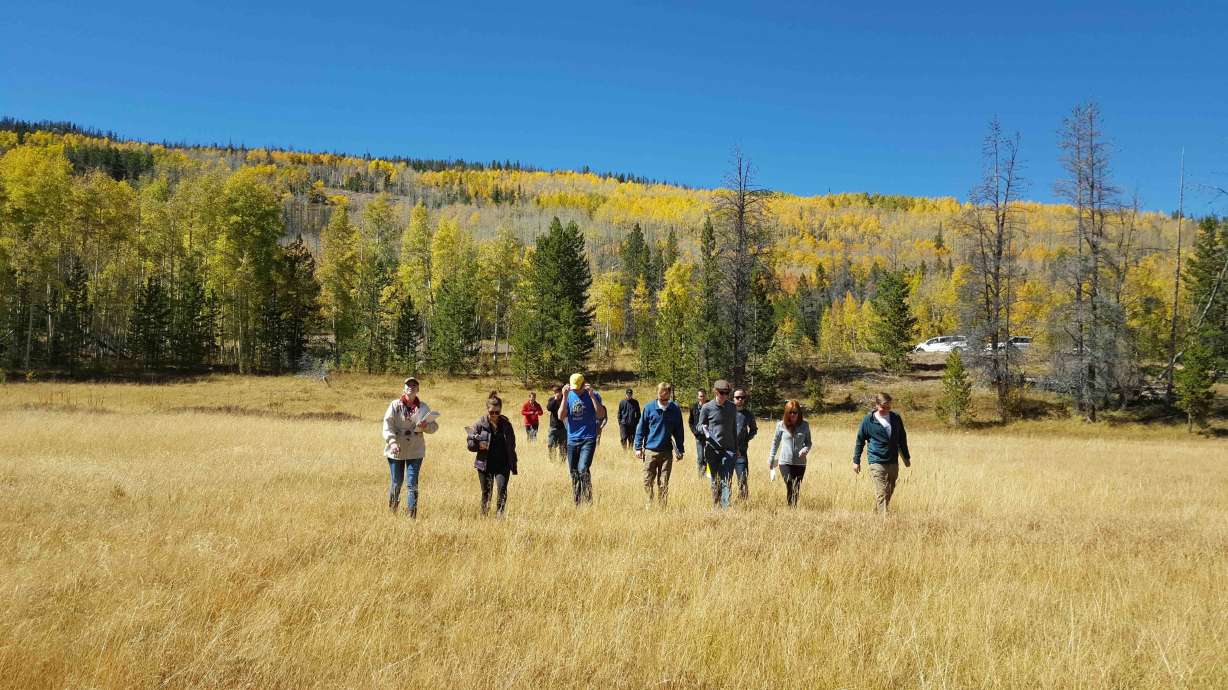Estimated read time: 3-4 minutes
This archived news story is available only for your personal, non-commercial use. Information in the story may be outdated or superseded by additional information. Reading or replaying the story in its archived form does not constitute a republication of the story.
SALT LAKE CITY — Students at the University of Utah will have a new school to sink their academic teeth into, as the university on Tuesday announced it has established the School of Environment, Society and Sustainability.
The move comes on the heels of a merger between two successful programs — the Department of Geography and Environmental and Sustainability Studies — within the U.'s College of Social and Behavioral Science.
Merging the programs, the U. said in a release, will help "meet rapid growth in undergraduate demand for environmental education while fostering research collaborations that address urgent societal issues."
And while the new name and academic structure represents a change, undergraduate and graduate degree offerings will stay the same, said Phil Dennison, the school's new director.
These include three STEM undergraduate degrees, with environmental and sustainability studies being the most popular major in the new school. It will also include bachelor's and master's degrees in geographic information science and bachelor's, master's and doctoral programs in geography.
The new school will be home to an ensemble of the two merged programs, with 25 tenure-track professors who have training in 11 different fields:
- Physical sciences: ecology, paleoecology, glaciology, geomorphology and snow hydrology.
- Social and behavioral sciences: environmental justice, environment sociology, politics ecology and economic geography.
- Data science: geographic information science, remote sensing and ecoinformatics.
Dennison said he believes this type of interdisciplinary approach should lead to real impacts. "Working together and looking at problems from multiple perspectives is going to catalyze big societal impacts," he said in a statement.
The school is also taking an "applied, integrative and solutions-oriented approach" driven by faculty research that explores topics like:
- How has the threat from wildfire changed over time, and who is most vulnerable to fires?
- Why are citizens in lower-income neighborhoods exposed to more pollution, and what steps can be taken to reduce exposure?
- How are glaciers and winter snowpack changing, and what does that mean for water resources?
- How are agriculture and climate related to migration patterns?"
Courses in the school are taught by former geography faculty members, along with professors from sister departments of sociology, anthropology, economics and political science.
"The School of Environment, Society and Sustainability provides more choices to students as they navigate their academic career paths," College of Social and Behavioral Science Dean Michelle Camacho said in a statement. "The school also supports our highly ranked research programs. Our faculty engage in cutting-edge research that increasingly requires transdisciplinary approaches to address society's most pressing environmental challenges."
Historical programs
The creation of the School of Environment, Society and Sustainability wasn't done by merging two struggling programs, either, as both have long histories at the U.
The geography department was founded in 1947 and has grown to include research in relevant areas such as climate change, hazards, ecology, remote sensing, GIS, landscape dynamics, paleoecology, snow science and urbanization.
Similarly, the program in Environmental and Sustainability Studies was established in 1998 and designed to "foster an understanding of ecological systems and the consequences of human-environment interactions," according to its mission statement.
The Environmental and Sustainability Studies program had 488 majors in spring 2023 and is coming off a 70% increase in majors over the last five years.










